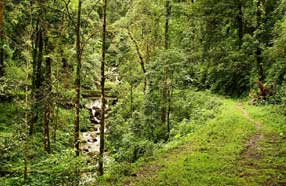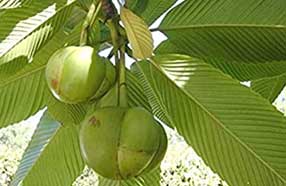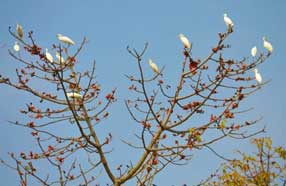Flora in Gorumara National Park
Flora, or the plant life is an essential component of any jungle to maintain the natural ecosystem. Flora found in any forest is very important as it provides oxygen, food and habitat to the species living here. The health and well-being of the forest ecosystem depend on the presence of a different and healthy variety of flora. Here we write some important flora that is found widely in Gorumara National Park.
Gorumara National Park is known for its diverse range of flora, which includes various types of trees, shrubs, herbs, climbers, and grasses. Here are some of the prominent flora species found in the park:
Flora is preserved in Gorumara National Park because it is an important component of the park's ecosystem and plays a vital role in supporting the park's biodiversity. The park's dense forests provide habitat for a diverse range of wildlife, including elephants, tigers, leopards, and many other species of animals and birds.
Sal Trees: Sal trees are the dominant species of trees found in Gorumara National Park. These trees can grow up to a height of 35 meters and are highly valued for their timber.



Teak Trees: Teak trees are another common species found in the park. These trees are highly valued for their durable and termite-resistant wood.
Elephant Apple Trees: Elephant apple trees are found in abundance in the park and are known for their edible fruits.
Semul Trees:Semul trees, also known as cotton trees, are known for their large, showy flowers.Arjun Trees: Arjun trees, also known as Indian almond trees, are valued for their medicinal properties.
Bamboo: Bamboo is found in abundance in the park and is used for various purposes, such as making furniture, baskets, and mats.
Wildflowers:Gorumara National Park is home to a variety of wildflowers, which add to the park's natural beauty.
Gorumara has been under protection since 1895, when it was declared a Reserve Forest under the Indian Forest Act of 1878. It became a Wildlife Sanctuary in 1949, and was finally elevated to National Park status in 1994. However, the final notification procedure is still not complete. Gorumara is located in the flood plains of Murti and Jaldhaka rivers in the Duars region, a terai habitat of Jalpaiguri district. There are many rivulets that have created wet grasslands, ideal for the One-horned Rhinoceros Rhinoceros unicornis, for which this area was protected for more than 100 years. In 1996, 16 individuals were present in Gorumara (Pratihar and Chakraborty 1996). The vegetation of Gorumara can be classified into four main types: Moist Deciduous and Dry Deciduous forests, Semi-evergreen forest, Riverine Forest and Savannah Forest. Nearly 326 species of plants have been identified, including 158 species of trees and 32 grasses. The core area of the Park contains dense mixed forest with thick undergrowth and is mainly composed of tall trees such as Shorea robusta, Tectona grandis, Bombax ceiba, Amoora wallichi, Dalbergia sissoo, Sterculia villosa
and Ficus bengalensis (Pratihar and Chakraborty 1996). An interesting grass species is Citronella, which adds the fragrance of citrus fruit to the air, wherever it occurs in the Park.